#the manhattan project
Text
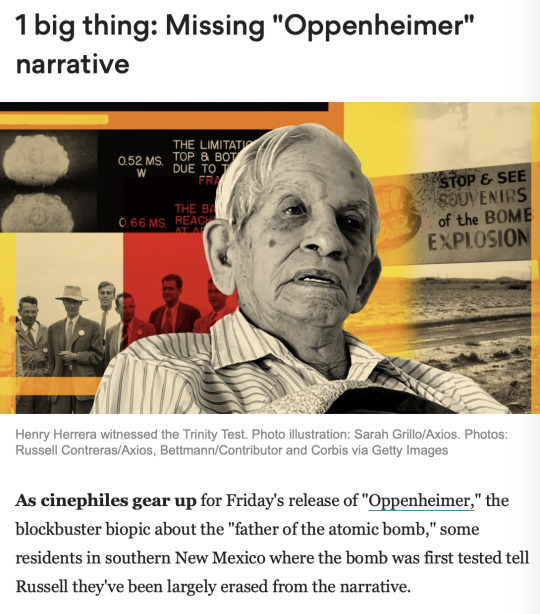




Full story here
21K notes
·
View notes
Text

63 notes
·
View notes
Text
OH MY GODDD LOOK AT THEM

#raph explaining things to his idiot boyfriend because his dumb ass is never around#tmnt 2012#2012 raphael#2012 casey jones#tmnt 2012 casey jones#rasey#2012 rasey#the manhattan project
113 notes
·
View notes
Text
'Before I saw the Barbie movie, I was resolutely against ever seeing the Barbie movie. Despite the fact that as a child I loved Barbie, who I interviewed regularly for important radio segments in her coral peach ball gown, I decided that the last thing I needed was 90 neon-coloured-Margot-Robbie-filled minutes of a film which would obviously have nothing new to offer me; a grown-up feminist woman who stopped idealising the problematic Barbie aesthetic decades ago.
But then the reviews from angry men started rolling in. You only had to be vaguely near the internet after Barbie’s release to hear the resounding roars of the mostly middle-aged; outraged that such an abomination against “all men” could even be allowed to exist. The reviews began to read like dreamy promotional soundbites: “An alienating, dangerous and perverse film”, “They won’t be happy until we are all gay”.
These men were really, really wound up about this film. They loathed it. They were spitting fury at Greta Gerwig for creating a piece of such obvious, glaring, “anti-men, feminist propaganda”.
And so, when I was asked by one of my teenage children if I would be up for a day of “Barbenheimer”, I said “yes”: newly salivating at the potential of a project that could cause this much delicious backlash.
I decided I would swallow my aversion towards sustained exposure to powder pink, get Barbie watched, then chase it all away with a good dose of brooding grey, historically accurate cinema. Despite the promise of those furious reviews, I still expected to enter and exit the cinema despising Barbie and in awe of Oppenheimer.
During the five hours of media and popcorn consumption that followed, a chain reaction set in motion that left me changed. It made the vitriolic reviews of Barbie, calling Greta Gerwig’s masterpiece “anti-men”, even more comical. The irony was bright and clear to me: Oppenheimer is anti-women.
And the thing is that Oppenheimer is not different to most films. Because most films are anti-women.
We just don’t take to the internet to rage about it because we’re used to it; desensitised by the decades of cinematic women who exist only to paint their lips red, bare their breasts and give the important male protagonists something to play with.
Is Barbie anti-men? Oh, I hope so (it isn’t, it’s anti-patriarchy), but also, frankly, I don’t care. Because if it is – after decades of movies made by male directors like Oppenheimer’s Christopher Nolan, it has good reason to be.
And it does what it so brilliantly does within the sparkly, imaginary bubble of an entirely fictional world where the male characters it side-lines are literally plastic dolls, all called Ken (except Alan); fake toys who simply can’t even breathe. Anti-women films like Oppenheimer on the other hand, sideline or completely erase very real, flesh-and-blood women who lived whole lives and made significant contributions to our world.
So, if you’re a man who has watched Barbie and felt angry or irritated or just plain strange while watching the depiction and treatment of the Kens – then welcome to cinema. That is what it feels like to be a woman watching Hollywood movies most of the time.
But here’s the thing – that poor Ken doll you’re lamenting over, is not Leona Woods; who at 23 was one of the youngest female scientists the Manhattan project employed. Ken, unlike Leona, was not present at the first nuclear chain reaction and Ken did not have to do what Leona did – which was to conceal her pregnancy until two days before her baby was born. Ken is also not Elizabeth Graves; a scientist entirely essential to the project’s success who was completing an experiment when she went into labour and did not stop the experiment until it was finished, timing her contractions with a stopwatch. Let’s see Christopher Nolan make a three-hour-long film about that.
Neither Woods nor Graves feature in Oppenheimer, which, like so many anti-women films, manages to assume such an air of authority that it can leave us assuming that its astounding lack of female representation must be down to its admirable commitment to historical accuracy. I’ve heard the cries – “It is called Oppenheimer after all. How much do you expect it to worry about its women?” And perhaps it’s true – you can’t very well expect a film about the very intelligent physicists who tackled the science behind creating the atomic bomb to change facts just for representation can you?
No. But you can and should expect such a film to accurately and fairly represent the female scientists who were, in fact, right there – alongside Oppenheimer and his men, ensuring the Manhattan Project’s success. Perhaps it might have been appropriate if viewers left the three-hour epic clear in the knowledge that Kitty Oppenheimer didn’t only drink herself to distraction while taking care of screaming children and dropping a hip flask out of her handbag at every possible moment; she was also a trained botanist who was employed at Los Alamos to take blood and test the levels of radiation exposure of her colleagues.
More than 600 women worked on the Manhattan Project at Los Alamos alone, yet the only female scientist given any recognition in Nolan’s world is Lilli Hornig, who speaks only briefly, mostly in opposition to the bomb’s use. And what about Charlotte Serber? Who Nolan depicts as Oppenheimer’s secretary, completely erasing her vital work as scientific librarian for the project’s “secret library” and who, with no formal training, became the only female group leader, overseeing a staff of 12 people while also risking her safety in counter-espionage efforts.
Oppenheimer doesn’t only fail the Bechdel test, it fails to represent the real women who contributed so significantly to that morally fraught turning point in history. Those women were physicists, engineers, chemists, mathematicians. They existed. And, as is so often the case, many of their achievements have been forgotten and remain unrecognised, by both history and cinema.
As I continue to emerge from my Barbenheimer experience, researching the lost women of the Manhattan project and occasionally still basking in the disgust of all those angry men who need to hate the work of art that is Barbie, it becomes ever clearer: anti-women is the benchmark of mainstream filmmaking and some people are simply unable to deal with the plastic Manolo Blahnik being on the other foot.'
#Barbenheimer#Oppenheimer#Barbie#Margot Robbie#Greta Gerwig#Leona Woods#Elizabeth Graves#The Manhattan Project#Kitty Oppenheimer#Los Alamos#Lilli Hornig#Charlotte Serber
119 notes
·
View notes
Text

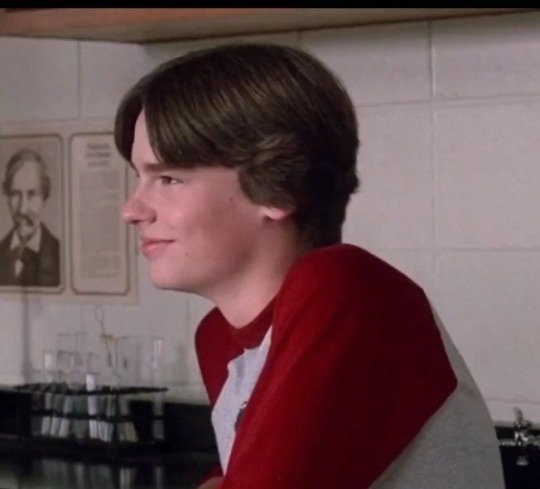
dave strider
#desire mona#media#IM SORRY IM SORRY IM SO SORRY#IM SORRY#hoping to god someone on rsl tumblr gets this a lot of u guys r babies#robert sean leonard#the manhattan project#homestuck#dave strider
22 notes
·
View notes
Text
used to be afraid to stand up for what i believe in bc i was like… what if people treat me weird, do not trust me, do not let me be involved in the intellectual pursuits i am interested in because of my politics,
but then i watched oppenheimer and learned how that man distanced himself from his politics for his career and so he could do something horrific and just… i don’t want to be that. i don’t want to let myself lose my conscience, my knowledge of what is right and wrong just because i really like physics and engineering.
it’s BAD to be a physicist, to be an engineer, to be whatever without being true to what you know is right and what is wrong, because that is exactly what leads to superweapons and cold wars and watching your creations be responsible for death. science and engineering is not meant to be used for death, it should be used to expand our knowledge of the world, to help people, to feed that natural curiosity of ours.
i never want to lose sight of that.
#oppenheimer#oppenheimer movie#science#physics#engineering#the ethics of science#you are a coward if you practice science with no regards to your moral qualms#ethics#ethical science#the manhattan project#morals#conscience#philosophy#leftist politics
86 notes
·
View notes
Text
Started the famous J. Robert Oppenheimer biography yesterday, the one that took thirty years to write and won the Pulitzer Prize. Here’s a few discoveries so far:
• His absolute favourite book as an adolescent was, impressively i think, George Eliot’s Middlemarch
• His father met his mother at an art gallery in New York and he fell instantly in love with her; we’re given a sample of their love letters and I must admit … (sniff). So that’s nice; though it’s curious to think how one of the fundamental precursors of The Manhattan Project has a direct common ancestry to fine art.
• He grew up with an unbelievable collection of artwork around him at his home, including a Rembrandt sketch, several Van Goghs and Cézannes.
• At twelve years old he corresponded regularly with leading geologists in the States; after a time, not knowing his age, several of them nominated his membership into the Geological Society and invited him to give the traditional inaugural lecture. When he arrived everyone rolled about with laughter (at their own foolishness, it seems) and amazement at his precocity. They found a box for him to stand on at the dais and little Oppenheimer gave, to all accounts, a fine lecture.
more to come (not with a bang but a whimper, etc.,)
#j robert oppenheimer#middlemarch#george eliot#van gogh#rembrandt#paul cezzane#oppenheimer#american prometheus#personal notes#fine art#the manhattan project#n.
76 notes
·
View notes
Note
tbh: you should just take all of that first thread out of the oppenheimer post. it's a little bit of truth (a couple dozen families of hispanic homesteaders had their land seized via imminent domain and were unjustly compensated) coupled with a *lot* of b.s. or exaggeration (their livestock were SHOT, they were FORCED to work in berylium mines, white workers got protective gear but hispanic ones didn't, loyda martinez sued because of the beryliosis, etc. etc.)
Thank you for telling me. I only did a general check on whether the issue was real instead of whether each claim was true. My bad. I was only able to do a cursory Google search on those claims, which didn't turn up anything, but Google is also pretty unreliable now. I'm beginning to doubt whether Alisa is a good faith actor though, which is a shame because it sabotages the surfacing of the violence done to New Mexico's Hispanos. I disabled reblogs on the post until I could look into it in-depth.
In the meantime, here's a source for the population impact and infant mortality of people caught downwind of the Trinity test:
Here's one about an NYC vigil held for the New Mexico people affected by The Manhattan Project's nuclear tests.
“They’ll never reflect on the fact that New Mexicans gave their lives. They did the dirtiest of jobs. They invaded our lives and our lands and then they left,” Tina Cordova, a cancer survivor and founder of a group of New Mexico downwinders, said of the scientists and military officials who established a secret city in Los Alamos during the 1940s and tested their work at the Trinity Site some 200 miles (322 kilometers) away.
And by far the most blood-curdling thing I found:

Jesus Christ. There's a book called The Plutonium Files written about the experiments conducted for The Manhattan Project. From the Wikipedia article:

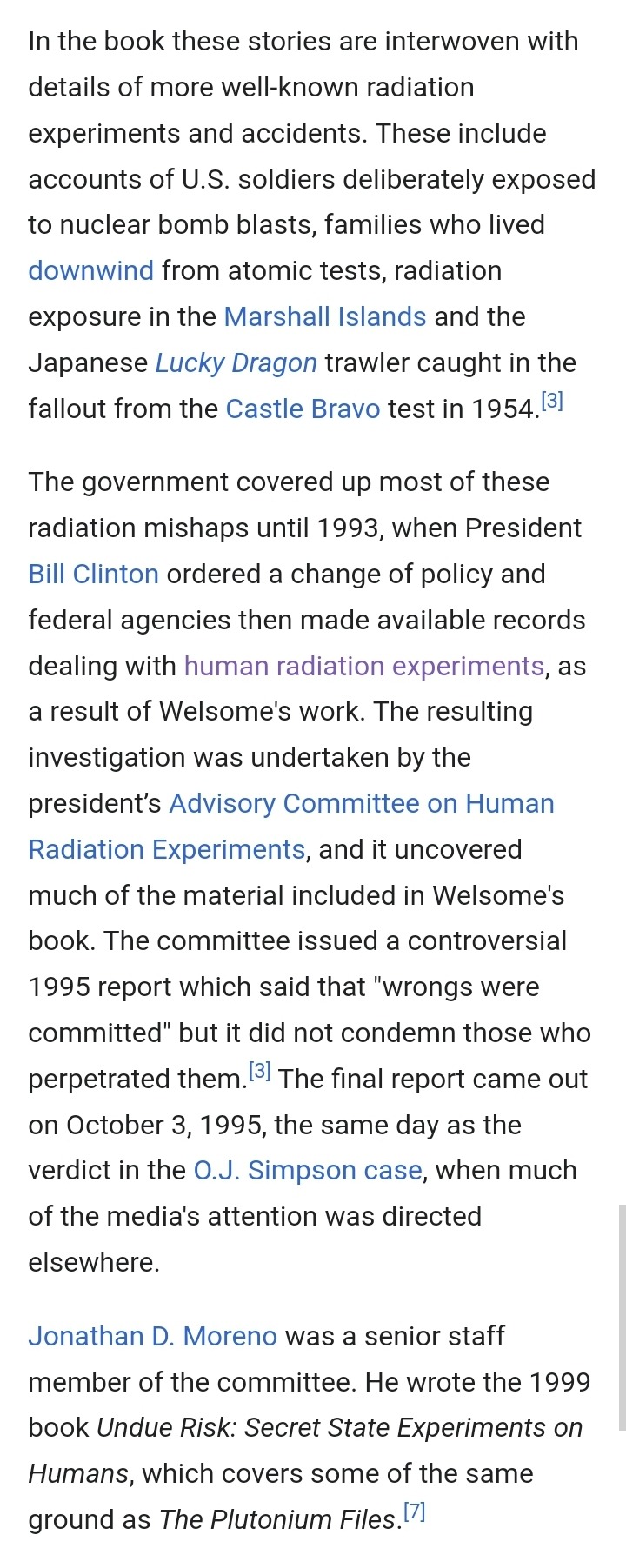
What. The fuck. I'd never be lax about unverified claims, but you can see why shooting livestock and the forced labour of native landholders doesn't stretch believability to a lot of people.
Here's a very detailed but easy to read pdf about the experiments and who spearheaded them. I'm ADHDing my way through it, but it does include Oppenheimer's own proximity to the trials.
#anon#asks#oppenheimer#new mexico#colonization#nuclear testing#the manhattan project#ableism#torture#world war ii#military industrial complex#war propaganda#human rights violations#disabled abuse#disabled history#cw: torture#cw: child abuse#the plutonium files#human experimentation#hispanos#indigenous rights#colonial violence#imperialism#knee of huss
47 notes
·
View notes
Text




144 notes
·
View notes
Text

Isidor Isaac Rabi was born on July 29, 1898. An American physicist, he won the Nobel Prize in Physics in 1944 for his discovery of nuclear magnetic resonance, which is used in magnetic resonance imaging (MRI). He was also one of the first scientists in the United States to work on the cavity magnetron, which is used in microwave radar and microwave ovens. In 1942, Oppenheimer attempted to recruit Rabi to work at the Los Alamos Laboratory on a new secret project. He declined, but did work as a consultant on the Manhattan Project.
#isidor isaac rabi#physics#microwaves#oppenheimer#manhattan project#the manhattan project#nobel prize#nobel prize winners#science#science history#science birthdays#on this day#on this day in science history
31 notes
·
View notes
Text

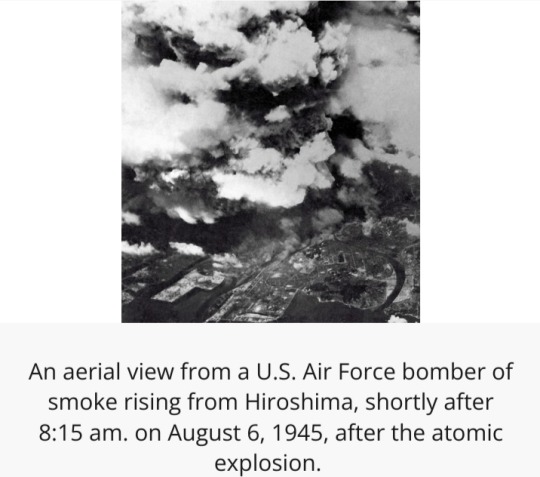
On 6 August 1945, during World War II (1939-45), an American B-29 bomber dropped the world’s first deployed atomic bomb over the Japanese city of Hiroshima.
The explosion immediately killed an estimated 80,000 people; tens of thousands more would later die of radiation exposure.
Three days later, a second B-29 dropped another A-bomb on Nagasaki, killing an estimated 40,000 people.
Japan’s Emperor Hirohito announced his country’s unconditional surrender in World War II in a radio address on August 15, citing the devastating power of “a new and most cruel bomb.”
The Manhattan Project
Even before the outbreak of war in 1939, a group of American scientists — many of them refugees from fascist regimes in Europe — became concerned with nuclear weapons research being conducted in Nazi Germany.
In 1940, the U.S. government began funding its own atomic weapons development program, which came under the joint responsibility of the Office of Scientific Research and Development and the War Department after the U.S. entry into World War II.
The U.S. Army Corps of Engineers was tasked with spearheading the construction of the vast facilities necessary for the top-secret program, codenamed “The Manhattan Project” (for the engineering corps’ Manhattan district).

Over the next several years, the program’s scientists worked on producing the key materials for nuclear fission — uranium-235 and plutonium (Pu-239).
They sent them to Los Alamos, New Mexico, where a team led by J. Robert Oppenheimer worked to turn these materials into a workable atomic bomb.
Early on the morning of 16 July 1945, the Manhattan Project held its first successful test of an atomic device — a plutonium bomb — at the Trinity test site at Alamogordo, New Mexico.
No Surrender for the Japanese
By the time of the Trinity test, the Allied powers had already defeated Germany in Europe.
Japan, however, vowed to fight to the bitter end in the Pacific, despite clear indications (as early as 1944) that they had little chance of winning.
In fact, between mid-April 1945 (when President Harry Truman took office) and mid-July, Japanese forces inflicted Allied casualties totaling nearly half those suffered in three full years of war in the Pacific, proving that Japan had become even more deadly when faced with defeat.
In late July, Japan’s militarist government rejected the Allied demand for surrender put forth in the Potsdam Declaration, which threatened the Japanese with “prompt and utter destruction” if they refused.
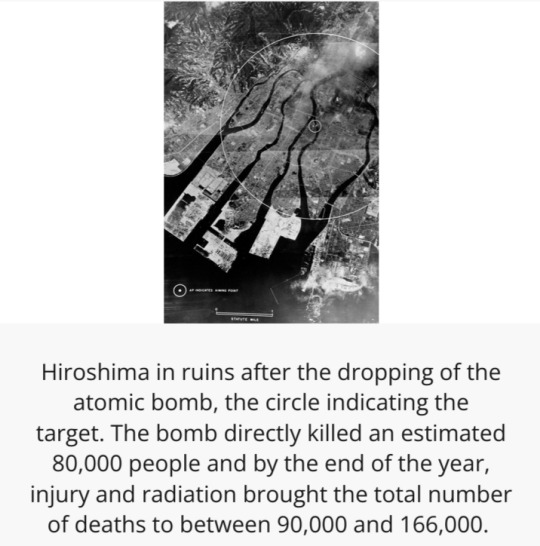
General Douglas MacArthur and other top military commanders favored continuing the conventional bombing of Japan already in effect and following up with a massive invasion, codenamed “Operation Downfall.”
They advised Truman that such an invasion would result in U.S. casualties of up to 1 million.
In order to avoid such a high casualty rate, Truman decided – over the moral reservations of Secretary of War Henry Stimson, General Dwight Eisenhower and a number of the Manhattan Project scientists – to use the atomic bomb in the hopes of bringing the war to a quick end.
Proponents of the A-bomb — such as James Byrnes, Truman’s secretary of state — believed that its devastating power would not only end the war but also put the U.S. in a dominant position to determine the course of the postwar world.
'Little Boy' and 'Fat Man' Are Dropped
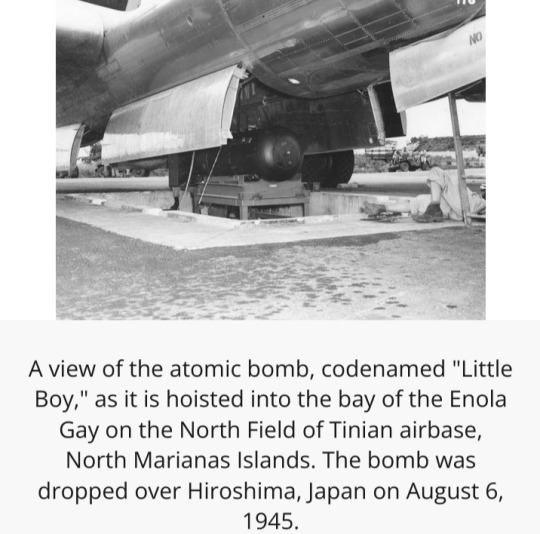
Hiroshima, a manufacturing center of some 350,000 people located about 500 miles from Tokyo, was selected as the first target.
After arriving at the U.S. base on the Pacific island of Tinian, the more than 9,000-pound uranium-235 bomb was loaded aboard a modified B-29 bomber christened Enola Gay (after the mother of its pilot, Colonel Paul Tibbets).
The plane dropped the bomb — known as “Little Boy” — by parachute at 8:15 in the morning.
It exploded 2,000 feet above Hiroshima in a blast equal to 12-15,000 tons of TNT, destroying five square miles of the city.
Hiroshima’s devastation failed to elicit immediate Japanese surrender, however, and on August 9, Major Charles Sweeney flew another B-29 bomber, Bockscar, from Tinian.
Thick clouds over the primary target, the city of Kokura, drove Sweeney to a secondary target, Nagasaki, where the plutonium bomb “Fat Man” was dropped at 11:02 that morning.
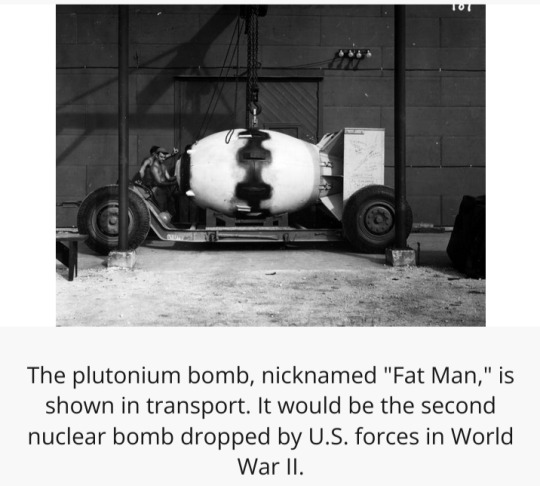
More powerful than the one used at Hiroshima, the bomb weighed nearly 10,000 pounds and was built to produce a 22-kiloton blast.
The topography of Nagasaki, which was nestled in narrow valleys between mountains, reduced the bomb’s effect, limiting the destruction to 2.6 square miles.
Aftermath of the Bombing

At noon on 15 August 1945 (Japanese time), Emperor Hirohito announced his country’s surrender in a radio broadcast.
The news spread quickly.
“Victory in Japan” or “V-J Day” celebrations broke out across the United States and other Allied nations.
The formal surrender agreement was signed on September 2, aboard the U.S. battleship Missouri, anchored in Tokyo Bay.
Because of the extent of the devastation and chaos — including the fact that much of the two cities' infrastructure was wiped out — exact death tolls from the bombing of Hiroshima and Nagasaki remain unknown.
However, it's estimated roughly 70,000 to 135,000 people died in Hiroshima and 60,000 to 80,000 people died in Nagasaki, both from acute exposure to the blasts and from long-term side effects of radiation.


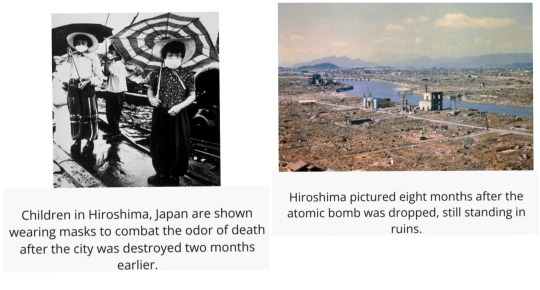
#Bombing of Hiroshima and Nagasaki (1945)#6 August 1945#atomic bomb#Hiroshima#Nagasaki#B-29 bomber#A-bomb#U.S. Army Corps of Engineers#The Manhattan Project#nuclear weapons research#Office of Scientific Research and Development#War Department#World War II#WWII#uranium-235#plutonium (Pu-239)#nuclear fission#plutonium bomb#J. Robert Oppenheimer#Oppenheimer#Trinity test#Potsdam Declaration#General Douglas MacArthur#Operation Downfall#Henry Stimson#General Dwight Eisenhower#Enola Gay#Colonel Paul Tibbets#Bockscar#V-J Day
32 notes
·
View notes
Text
Splinter, to his sons: I don’t know how to tell you all this, so I’m just going to whisper it into Michelangelo’s ear, causing him to shout it out in astonishment.
Splinter: *whispers in Mikey’s ear*
Mikey: KARAI’S OUR SISTER?!
#incorrect tmnt quotes#source: jimmy neutron#tmnt 2012#tmnt#teenage mutant ninja turtles#master splinter#michelangelo#karai#the manhattan project#wormquake
255 notes
·
View notes
Text
'Oppenheimer has become the highest-grossing biopic of all time, surpassing previous record-holder Bohemian Rhapsody.
The Christopher Nolan film, which was released in July, follows the story of J. Robert Oppenheimer – dubbed the “father of the atomic bomb” – and the secretive Manhattan Project which created the first nuclear weapons during World War 2.
The feature has now grossed more than $912.7million (£736million) at the global box office, taking it past Queen biopic Bohemian Rhapsody‘s $910.8million (£734.5million) haul to make it the most successful biopic at the box office.
Bohemian Rhapsody was released in 2018 and stars Rami Malek (who also appears in Oppenheimer as nuclear physicist David L. Hill) as Freddie Mercury – a role for which he won the Academy Award for Best Actor.
Oppenheimer has already broken a number of box office records throughout its run, recently becoming the most successful World War 2-related film ever, and is the third highest-grossing film of 2023 behind Barbie and The Super Mario Bros. Movie.
It is also director Nolan’s third highest-grossing film behind Batman blockbusters The Dark Knight and The Dark Knight Rises.
Oppenheimer stars Cillian Murphy as the central character, with Emily Blunt as Kitty Oppenheimer, Matt Damon as General Leslie Groves, Robert Downey Jr. as Lewis Strauss and Florence Pugh as Jean Tatlock.
In NME‘s five-star review of the film, we said: “Not just the definitive account of the man behind the atom bomb, Oppenheimer is a monumental achievement in grown-up filmmaking.
“For years, Nolan has been perfecting the art of the serious blockbuster – crafting smart, finely-tuned multiplex epics that demand attention; that can’t be watched anywhere other than in a cinema, uninterrupted, without distractions. But this, somehow, feels bigger.”'
#Oppenheimer#Christopher Nolan#Cillian Murphy#Emily Blunt#Kitty#Matt Damon#Leslie Groves#Robert Downey Jr.#Lewis Strauss#Florence Pugh#Jean Tatlock#Rami Malek#The Dark Knight#The Dark Knight Rises#Bohemian Rhapsody#The Manhattan Project#David Hill#Queen
21 notes
·
View notes
Photo
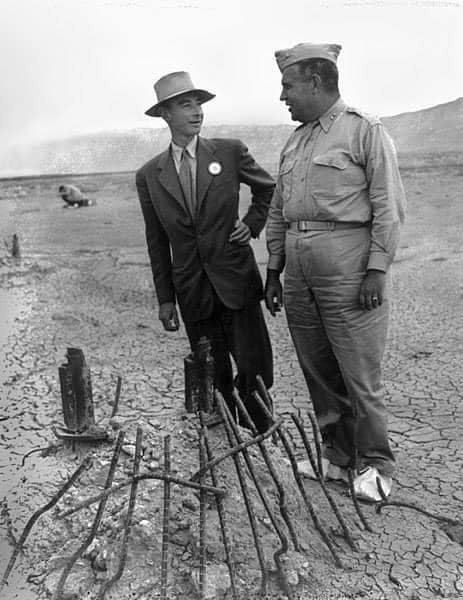
Joseph Esposito: J. Robert Oppenheimer, the brilliant scientist and “Father of the Atomic Bomb,” was born on this day in 1904. Oppie, as he was known to his friends, was a complex man: he was arrogant, charismatic, and personally and politically naïve. He lost his security clearance in 1954 as he was embroiled in the McCarthyism of the period.
While conservative Republican leaders saw Oppenheimer as a questionable character, if not worse, American intellectuals supported him and saw the security hearing that investigated his security worthiness as a witch hunt and whitewash
Columnists Joe and Stewart Alsop, for example, wrote an indictment of the proceedings, "We Accuse!"--harkening back to to Emile Zola's ringing defense of Alfred Dreyfus in 1898--for Harper's. They concluded by saying of the removal of the scientist's clearance: "This act did not disgrace Robert Oppenheimer: it dishonored and disgraced the high traditions of American freedom."
Oppenheimer was a guest at the Nobel dinner at the White House in 1962. Although he was worthy to be in the same gathering as these Nobel laureates, some of whom also worked with him on the Manhattan Project, he was clearly the most controversial. President Kennedy’s invitation to the dinner was part of an effort to publicly rehabilitate the scientist. He would later select him for the prestigious Fermi Award. Oppenheimer died in 1967.
A year before Oppenheimer died, Arthur Schlesinger wrote to him: "You have faced more terrible things than most men in this terrible age, and you have provided all of us with an example of moral courage, purpose and discipline--you probably are not aware of the meaning your life has had for my generation."
It was a great pleasure to talk about Oppenheimer and President Kennedy at the Historical Society of Princeton a few years ago. Oppenheimer had been director of the Institute of Advanced Study at Princeton and a resident of the town.
I am looking forward to the "Oppenheimer" movie (directed by Christopher Nolan), which will be released in July.
The photo here is of Oppenheimer with his famous slouch hat and Lt. Gen. Leslie Groves, the overall head of the Manhattan Project. It was taken at the Trinity atomic site in 1945 and it is in the public domain.
[Scott Horton]
14 notes
·
View notes
Photo


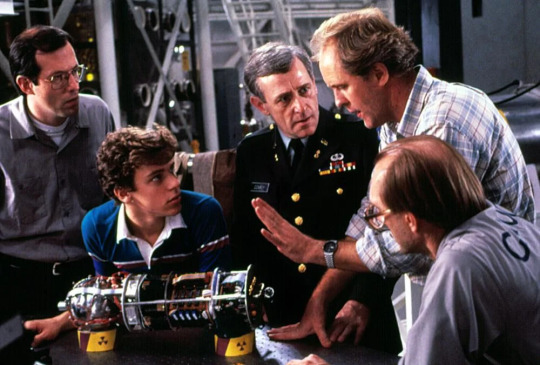
The 1980s: When an ambitious science nerd could build his own nuke and have a young Cynthia Nixon as a girlfriend.
79 notes
·
View notes
Photo

Raphael and Donatello of the Teenage Mutant Ninja Turtles cover Nintendo Power #33 for Teenage Mutant Ninja Turtles 3: The Manhattan Project
#teenage mutant ninja turtles 3 the Manhattan project#the manhattan project#tmnt#teenage mutant ninja turtles#nes#nintendo#video games#video game magazines#nintendo power
23 notes
·
View notes